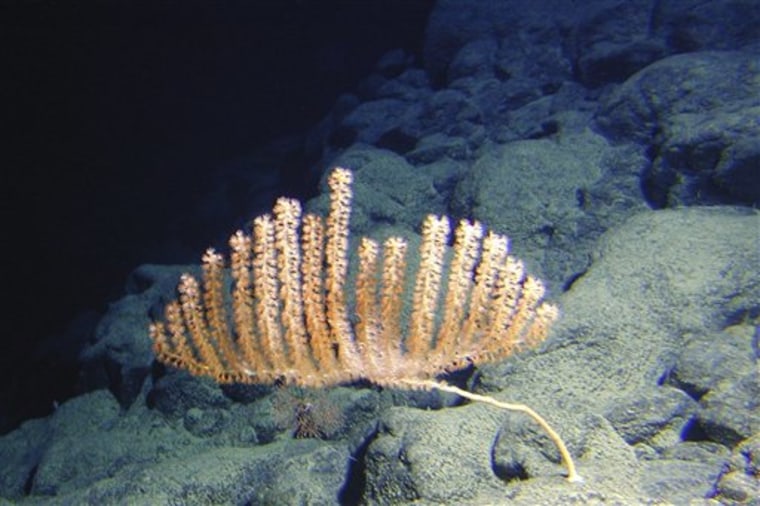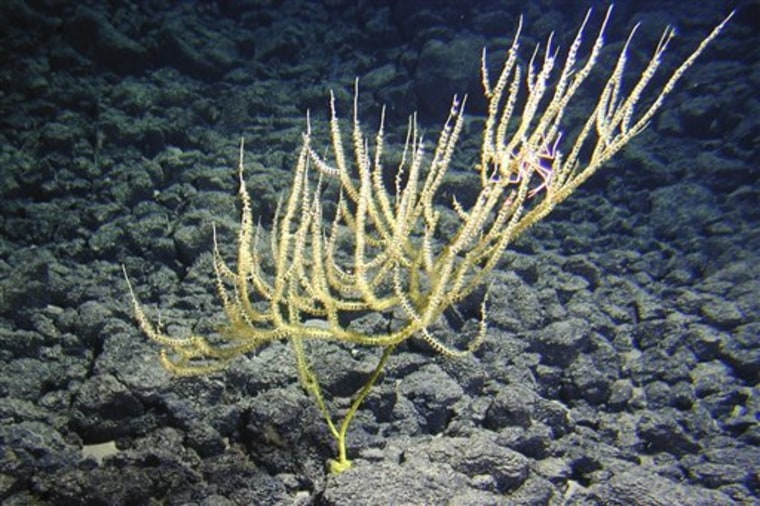Scientists have identified seven new species of bamboo coral discovered thousands of feet below the ocean's surface off Hawaii.
The National Oceanic and Atmospheric Administration said the six of the seven species may represent entirely new genera, calling it a "remarkable feat" given the broad classification a genus represents.
A genus is a major category in the classification of organisms, ranking above a species and below a family.
University of Hawaii scientist Christopher Kelley, one of two scientists who found the coral, said the "potential for more discoveries is high."
Scientists expect to identify more new species as analysis of samples continues.
Richard Spinrad, NOAA's assistant administrator for oceanic and atmospheric research, said the discoveries are important because deep-sea corals support diverse sea floor ecosystems and their growth rings, like ones from trees, can provide views of how deep-ocean conditions change.
He said the corals "may be among the first marine organisms to be affected by ocean acidification," which is a change in ocean chemistry due to excess carbon dioxide.

The coral was discovered among the islands of Papahanaumokuakea Marine National Monument using a submersible research vessel in 2007. The three-week research mission was to locate and predict locations of high density deep-sea coral beds in the national monument.
Stanford scientist Rob Dunbar was also part of the mission, studying long-term climate data by examining long-lived corals. "We found live, 4,000-year-old corals in the monument – meaning 4,000 years worth of information about what has been going on in the deep ocean interior," he said.
"Studying these corals can help us understand how they survive for such long periods of time, as well as how they may respond to climate change in the future," said Dunbar.
The same mission also found:
- a five-foot tall yellow bamboo coral tree that had never been described before;
- new beds of living deepwater coral and sponges;
- a giant sponge scientists dubbed the “cauldron sponge,” approximately three feet tall and three feet across;
- a large coral graveyard.
The scientists estimated the deaths occurred several thousand years to potentially more than 1 million years ago. The species of coral had never been recorded in Hawaii before.
Scientists do not know why the coral died.
Papahanaumokuakea, nearly 100 times larger than Yosemite National Park, was created by President George W. Bush in 2006. It is in the Northwestern Hawaiian Islands, which stretch 1,000 miles from the main Hawaiian Islands.
